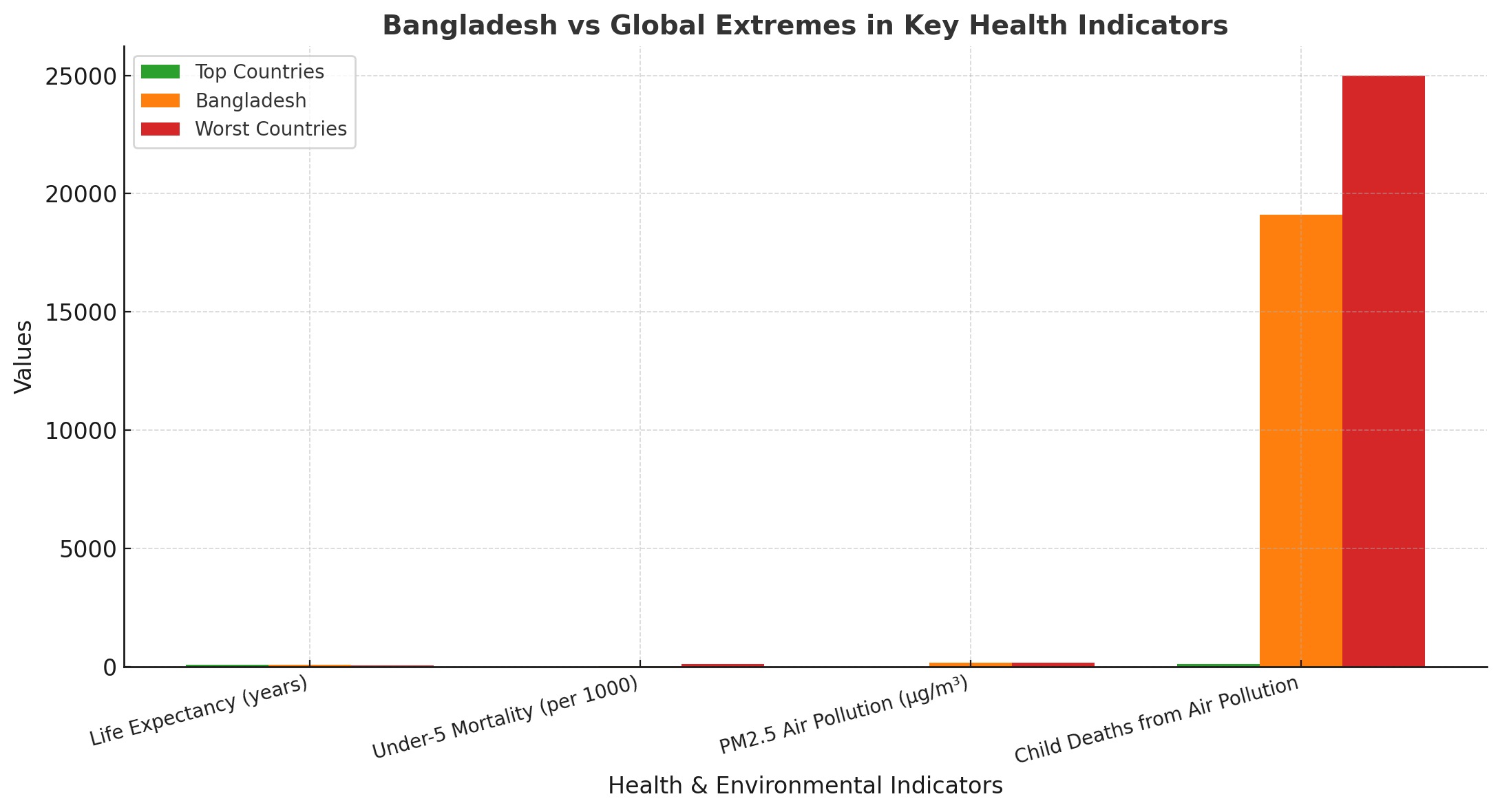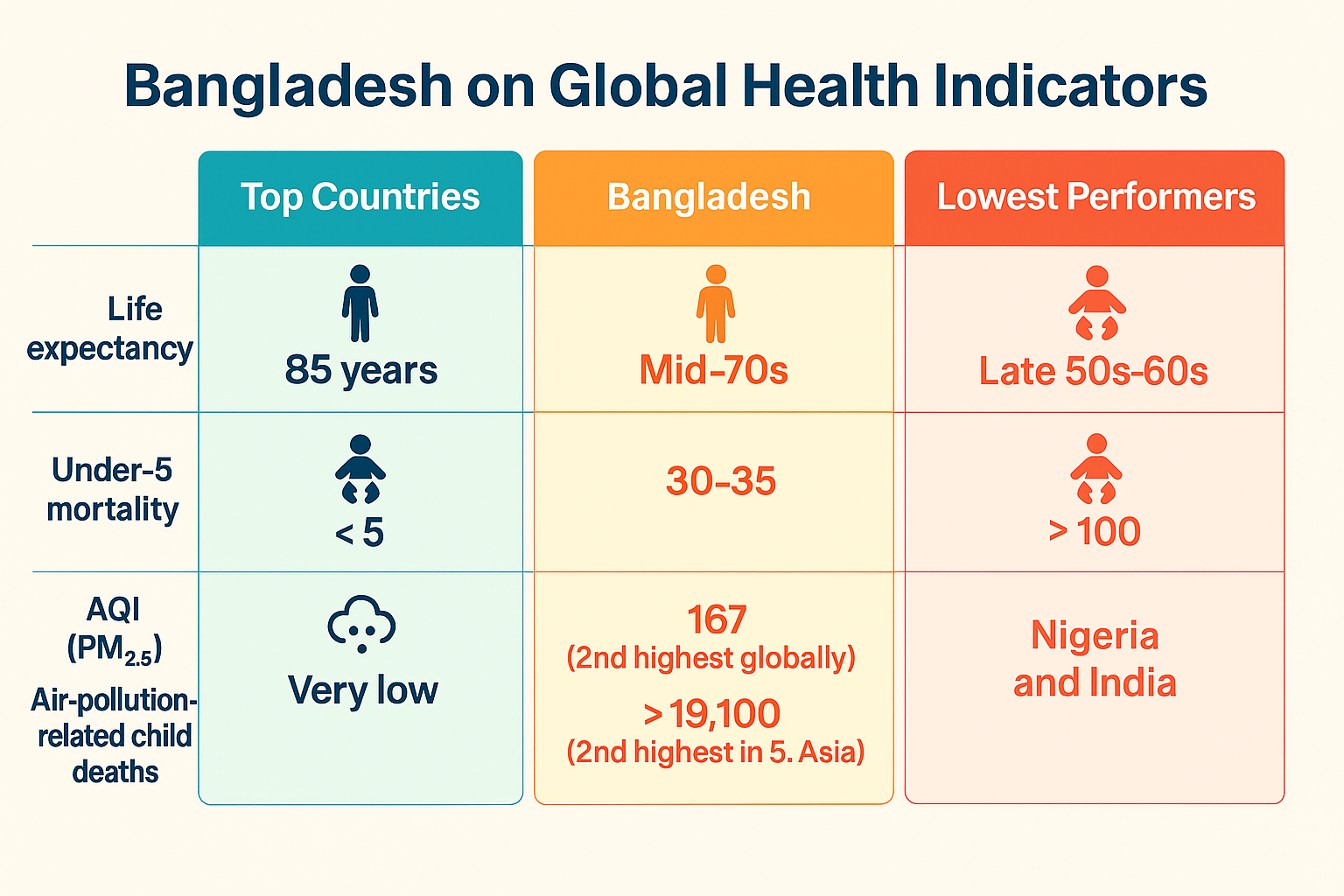Bangladesh has made notable progress in reducing child mortality and expanding access to basic healthcare, but it continues to rank among the worst-performing countries globally in terms of air quality and pollution-related health risks, according to the latest Global Burden of Disease data published by the Washington-based Institute for Health Metrics and Evaluation (IHME).
While countries like Japan, Norway, and Switzerland lead the world in life expectancy, environmental health, and healthcare access, Bangladesh remains in a transitional phase, marked by improvements in some sectors and serious shortcomings in others, said the report by IHME, affiliated with University of Washington School of Medicine.
Bangladesh’s one of the most significant achievements in recent decades has been the dramatic reduction in under-five mortality. Thanks to expanded immunisation programmes, improved nutrition, and investments in maternal care, the country has brought down child death rates from over 100 per 1,000 live births in the 1990s to around 30-35 today.
“This puts Bangladesh ahead of several sub-Saharan African countries, such as Chad and South Sudan, where under-five mortality still exceeds 100 per 1,000 births.”
However, these gains are undermined by the country’s worsening air quality.
Bangladesh now ranks as the second-most polluted country in the world in terms of fine particulate matter (PM2.5) concentration, just behind Chad. Data show the country’s average air quality index hovers around 167, significantly higher than the World Health Organization’s recommended safe level of 15. This environmental crisis has become a leading contributor to respiratory diseases, especially among children.

According to IHME estimates, more than 19,000 deaths of children under five in Bangladesh are linked to air pollution each year. This places the country among the worst in South Asia, second only to India.
Household air pollution, caused by the widespread use of biomass fuels such as wood and dung for cooking, contributes significantly to this toll. In rural areas, where access to clean energy remains limited, children are often exposed to indoor smoke that increases the risk of pneumonia and other respiratory infections. Such conditions contribute to more than a quarter of all neonatal deaths in South Asia.
Comparatively, top-performing countries like New Zealand and the Bahamas enjoy some of the cleanest air in the world, with PM2.5 levels below 10. At the other end of the spectrum, Bangladesh finds itself grouped with nations facing protracted crises and environmental collapse. Despite this, it still performs better than some of the lowest-ranked countries in Africa when it comes to maternal health coverage, vaccine access, and disease surveillance.
Experts warn that without urgent interventions to tackle air pollution and improve respiratory healthcare, Bangladesh’s public health gains may stall or even reverse. Policy recommendations include transitioning to clean cooking fuels, enforcing stricter emission standards for vehicles and factories, and expanding access to antibiotics and pneumonia vaccines in underserved regions.
Bangladesh’s trajectory reflects the complexity of development: a country that has overcome historic challenges in child survival and infectious disease but is now confronted with new threats rooted in environmental degradation and urban expansion.
To narrow the gap between itself and the world’s healthiest nations, Bangladesh must address the structural and environmental determinants of health Metrics with the same determination it once brought to tackling infant mortality, the report said.


